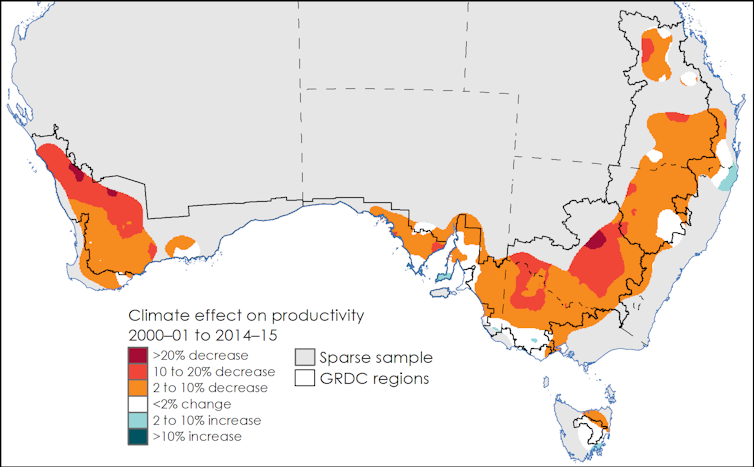
Shutterstock
Gregory Mowle, University of Canberra
The coronavirus pandemic has wreaked havoc on the Australian economy, and the financial effects for many are deeply personal.
Sadly, there’s no shortage of terrible advice online when it comes to personal finance. And as September 30 looms – the date by which JobKeeper, the increased JobSeeker and many negotiated rent and mortgage deferrals end – it’s important to be fully informed before you make potentially life-changing financial decisions.
As a former financial counsellor and former consumer credit educator for the Australian Securities and Investments Commission (ASIC), here’s what I think you need to know if you’re considering mortgage deferral, rent relief or bankruptcy.
Read more:
Going bankrupt is a life changing decision – so why is the process to do it so easy?
Mortgage deferral
Residential mortgages are covered by federal legislation, under which lenders can assist when borrowers can’t afford their usual repayments due to changed circumstances — such as losing hours or employment.
For example, you can ask your lender put on hold payments from June to September. It’s up to you and the creditor to establish clearly what happens to those payments. Are they pushed to the end of the contract, thereby extending the life of your loan? Or will you repay extra when you can afford repayments again?
Make sure you understand how much more it will cost you in additional interest if you extend the life of your loan by deferring these payments to the end of the contract. Depending on the details of your loan, you could be adding thousands of dollars to the amount you need to repay.
Most mortgage lenders don’t really want to repossess your house. It’s costly, time-consuming and stressful. But before asking for mortgage relief, you need to have a plan for the post-deferral period.
What happens if you still can’t make your usual repayments? Any licensed financial professional should be able to help negotiate a deferral on your mortgage or other consumer debts such as credit cards, but you should first consider seeing a free financial counsellor who is independent of any lenders. They can be contacted on 1800 007 007 or through the National Debt Helpline

Shutterstock
Rent relief
If you can’t pay your rent due to changed circumstances, you can ask your landlord to reduce or defer your rent. They can, of course, say no.
Unlike mortgage deferral, the implementation and process is inconsistent across states and territories. It can be difficult to navigate.
There are reports of some landlords asking for comprehensive financial statements to support claims, or for their tenants to access the early release of up to A$10,000 in superannuation to pay the rent.
Ausralia’s corporate watchdog, the Australian Securities and Investments Commission (ASIC), has warned real estate agents that advising tenants to take money from their superannuation may constitute giving unlicensed financial advice and/or be against people’s best interests, attracting possible fines and jail time.
If you’re talking with your landlord about rent relief, be clear on whether you’re talking about rent payments being reduced, deferred or permanently waived, and whether these payments would need to be made up by a certain date. Renters can seek help from free financial counsellors or a tenants’ union.
State and territory governments have established various schemes to help renters work out agreements with their landlord (see this Western Australian scheme as an example).
Read more:
What if I can’t pay my rent? These are the options for rent relief in Australia
Bankruptcy
Bankruptcy should be a last resort. Many creditors have shown they’re willing to provide short-term delays (for about 90 days, for example) if people need more time to pay a debt.
Consumer credit contracts are written on the basis that life has its ups and downs and if a debtor genuinely can’t pay, the creditor can help by reducing payments, stopping interest charges, deferring payments and/or restructuring loans.
In almost all consumer bankruptcies, there is no return to creditors so they generally don’t want debtors to go bankrupt. It’s in their interest to help debtors through a difficult period so they can return to making payments.

Shutterstock
Of great concern to consumer advocates is that searching “bankruptcy” or “help with debts” on the internet will often generate results for companies with a vested interest in placing you in what’s called a “debt agreement”. These should be approached with caution. It basically means you pay for a company to help you declare bankruptcy – but this is unnecessary.
A debt agreement is an act of bankruptcy that directs fees to those companies and quite often places consumers in unmanageable and unsustainable long-term repayment plans.
Instead, try to find free financial counsellors, some of whom work for charities. They are professional, unbiased and expert at informing people of their options when in debt. They can be found via the government’s MoneySmart site.
If you can’t pay your debts, there are many options available. The key is contacting the right person or organisation – and knowing whatever comes up first in a Google search is not necessarily the best or most impartial place to get help in a financial crisis.![]()
Gregory Mowle, Lecturer in Finance, University of Canberra
This article is republished from The Conversation under a Creative Commons license. Read the original article.



You must be logged in to post a comment.